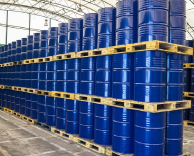Why Transformer Dry-Out Systems Are the Future of Power Maintenance.
Introduction
As the global demand for reliable power infrastructure grows, maintaining the health and efficiency of critical assets like transformers has become paramount. Transformers, the backbone of power transmission and distribution systems, face numerous challenges, including moisture contamination. In this context, Transformer Dry-Out Systems have emerged as a revolutionary solution for ensuring long-term performance, reducing maintenance costs, and safeguarding power supply continuity. This article delves deep into why transformer dry-out systems are indispensable for the future of power maintenance.

The Challenges of Moisture in Transformers
Moisture is one of the most significant threats to transformer health. It degrades the insulating properties of transformer oil and solid insulation, leading to several issues, including:
- Decreased Dielectric Strength: Excess moisture lowers the ability of the transformer oil and insulation to withstand electrical stress.
- Accelerated Aging: Moisture accelerates cellulose degradation, shortening the lifespan of the transformer.
- Increased Risk of Failures: Water content in insulation leads to overheating, arcing, and even catastrophic transformer failures.
Traditional moisture management practices often involve oil replacement or reactive maintenance, both of which are costly and time-consuming. This is where Transformer Dry-Out Systems step in as a game-changer.
What Are Transformer Dry-Out Systems?
Transformer Dry-Out Systems are advanced equipment designed to remove moisture from transformer oil and solid insulation without requiring a shutdown. These systems use innovative technologies such as vacuum dehydration, molecular sieve filtration, or thermodynamic processes to extract water from the system efficiently. Unlike traditional methods, dry-out systems provide a continuous, in-service solution, enabling real-time moisture control.
Benefits of Transformer Dry-Out Systems
Oil testing includes a variety of analytical procedures designed to evaluate the condition and properties of insulating oil in transformers. These tests can be categorized into the following key areas:
- Enhanced Transformer Reliability Moisture reduction improves the dielectric strength of transformer oil, ensuring stable performance under varying load conditions. With dry-out systems, the risk of dielectric breakdown is significantly reduced, enhancing overall system reliability.
- Extended Transformer Lifespan By removing moisture from solid insulation, transformer dry-out systems slow down the aging process of cellulose insulation. This extends the operational life of transformers, maximizing return on investment.
- Cost Savings on Maintenance Transformer failures are costly, often requiring significant repairs or complete replacements. Dry-out systems prevent such failures by maintaining optimal moisture levels, reducing the need for reactive maintenance and costly downtime.
- Real-Time Monitoring and Control Many modern dry-out systems are equipped with sensors and IoT-enabled technologies that provide real-time data on moisture levels, temperature, and oil quality. This allows for predictive maintenance strategies and improved decision-making.
- Environmental Sustainability Replacing transformer oil generates waste and requires additional resources. Dry-out systems reduce the frequency of oil replacements, contributing to a more sustainable maintenance approach.
Key Technologies in Transformer Dry-Out Systems
1.Vacuum Dehydration
Vacuum dehydration is a proven method for removing dissolved and free water from transformer oil. By subjecting the oil to a high vacuum, water is evaporated at low temperatures, ensuring the preservation of the oil's chemical properties.
2.Molecular Sieve Filtration
Molecular sieves are specialized materials with microporous structures that adsorb moisture from transformer oil. This method is highly effective in maintaining oil purity and preventing re-contamination.
3.Thermodynamic Separation
This advanced technique leverages temperature and pressure differentials to separate water molecules from oil. Thermodynamic separation is particularly effective in high-capacity transformers.
Applications of Transformer Dry-Out Systems
1. Power Generation Plants
In power generation facilities, transformers operate under high loads and are critical for uninterrupted power supply. Dry-out systems ensure these transformers remain moisture-free, reducing the likelihood of outages.
2. Industrial Power Distribution
Industries rely heavily on transformers to power operations. Dry-out systems enable industries to maintain uninterrupted production schedules by preventing transformer failures.
3. Renewable Energy Systems
Renewable energy projects, such as wind and solar farms, depend on transformers for efficient power distribution. Transformer dry-out systems enhance the reliability and efficiency of these setups.
4. Utility Networks
In utility networks, where transformers are spread across vast geographical areas, dry-out systems provide an efficient and scalable solution for moisture management.
Minimac Systems’ Transformer Dry-Out Solutions
At Minimac Systems, we specialize in providing state-of-the-art solutions that redefine transformer maintenance. Our Transformer Dry-Out Systems are designed with cutting-edge technology to ensure effective and efficient moisture removal without the need for downtime.
Key Features of Minimac Transformer Dry-Out Systems
- High-Efficiency Moisture Removal:Our systems are equipped with advanced vacuum dehydration and thermodynamic separation technologies for unparalleled moisture extraction.
- Compact Design:Minimac dry-out systems are portable, allowing easy deployment across sites, even in remote areas.
- Real-Time Monitoring:Integrated sensors and IoT compatibility provide actionable data for predictive maintenance strategies.
- User-Friendly Interface:Our systems are designed for intuitive operation, requiring minimal training for on-site staff.
- Environmentally Conscious:With minimal oil wastage, our systems align with global sustainability goals.
Why Choose Minimac Systems?
- Proven Expertise:With years of experience in transformer maintenance solutions, Minimac Systems is a trusted name in the industry.
- Custom Solutions:We tailor our systems to meet the unique requirements of every client, ensuring maximum effectiveness.
- Reliable Support: From installation to routine maintenance, our team offers comprehensive support services to ensure uninterrupted operations.
Comprehensive Maintenance and Support Services
Implementing Transformer Dry-Out Systems is only the beginning of effective transformer maintenance. To maximize the performance and lifespan of these systems, dedicated maintenance and support services play a critical role.
1. Regular Performance Assessments
Scheduled inspections ensure that the dry-out system continues to operate at peak efficiency. These checks identify any wear, blockages, or system inefficiencies before they escalate into significant issues.
2. System Calibration and Upgrades
Advanced systems may require periodic calibration to ensure accurate moisture detection and removal. Upgrades to software and hardware ensure the system remains compatible with modern operational demands.
3. Emergency Troubleshooting and Repairs
Expert service teams provide immediate assistance during unexpected malfunctions. This minimizes downtime and prevents prolonged exposure to moisture that could damage the transformer.
4. Comprehensive Training Programs
Operators and maintenance teams benefit from hands-on training programs, enabling them to effectively manage the dry-out system and respond to anomalies promptly.
5. Customized Maintenance Plans
Tailored service plans take into account the specific operational environment and transformer requirements, ensuring optimized performance and prolonged equipment life.
By integrating routine maintenance with reliable support services, transformer dry-out systems deliver unmatched value and dependability for the power sector.
Why Transformer Dry-Out Systems Are the Future
As the power industry evolves to meet growing demands, reliability and efficiency have become non-negotiable. Transformer dry-out systems align perfectly with these requirements. Here's why they represent the future of power maintenance:
1. Proactive Maintenance
The shift from reactive to proactive maintenance is a significant trend in the power sector. Dry-out systems enable utilities to address moisture issues before they escalate into costly failures.
2. Digital Integration
Modern dry-out systems are compatible with digital monitoring tools and SCADA (Supervisory Control and Data Acquisition) systems. This integration supports data-driven maintenance and enhances operational efficiency.
3. Regulatory Compliance
Governments and regulatory bodies are emphasizing sustainability and operational efficiency in power systems. By minimizing waste and improving transformer performance, dry-out systems help organizations comply with these standards.
4. Cost-Effectiveness
With increasing pressure to reduce operational costs, utilities and industries are adopting solutions that offer long-term savings. Dry-out systems fit this need by reducing maintenance costs and extending equipment life.
Conclusion
Transformer Dry-Out Systems are transforming the landscape of power maintenance by offering a reliable, efficient, and sustainable solution to moisture management. As the industry moves toward more proactive and data-driven maintenance strategies, these systems will play a pivotal role in ensuring the longevity and reliability of transformers.
Incorporating comprehensive maintenance and support services further enhances the value of these systems, ensuring they deliver optimal performance throughout their lifecycle.
Adopting a transformer dry-out system is not just an investment in equipment—it's an investment in the future of power infrastructure.
Are you ready to future-proof your transformer maintenance strategy?
Choose Minimac Systems’ Transformer Dry-Out Solutions for superior reliability, cost savings, and operational efficiency.
Click here to learn more about Minimac Systems Transformer Dry-Out System:
https://www.minimacsystems.com/transformer-dryout-systemContact us today to learn how the Minimac Transformer Dry-Out System can transform your lubrication practices and ensure the success of your operations!
FAQs:
- Leaking Seals or Gaskets: Damaged seals allow water or humid air to enter.
- Condensation: Sudden temperature changes can cause water vapor to condense inside the transformer.
- Aging of Insulating Paper: Over time, cellulose insulation materials decompose and release water.
- Poor Oil Handling Practices: Improper storage or handling of transformer oil can introduce water contamination.
- 10-15 PPM for new transformers.
- 20-30 PPM for in-service transformers, depending on the age and type.
- Transformer oil
- Insulating oil
- Moisture Contamination: Water reduces the oil's dielectric strength and causes insulation breakdown.
- Aging and Overloading: Excessive electrical or thermal stress accelerates aging and damage.
- Poor Maintenance: Lack of regular inspections and maintenance can lead to undetected issues.
- Oil Contamination: Dirt, sludge, and moisture in the oil compromise its insulating properties.
- Electrical Faults: Short circuits, overloads, or surges can damage transformer components.
- Routine Inspections: Regularly check for oil leaks, rust, and unusual noises.
- Oil Testing: Measure moisture content (PPM), dielectric strength, and acidity levels.
- Moisture Removal: Use transformer dry-out systems to eliminate water content from oil and components.
- Oil Filtration: Periodically filter and degas transformer oil using filtration machines.
- Thermal Management: Monitor and maintain appropriate operating temperatures to prevent overheating.
- Electrical Testing: Perform tests like winding resistance, insulation resistance, and polarization index to assess the transformer’s condition.
- Decreased dielectric strength of the oil.
- Presence of moisture or dissolved gases in oil testing.
- Overheating of the transformer.
- Reduced operational efficiency or unusual noise.





